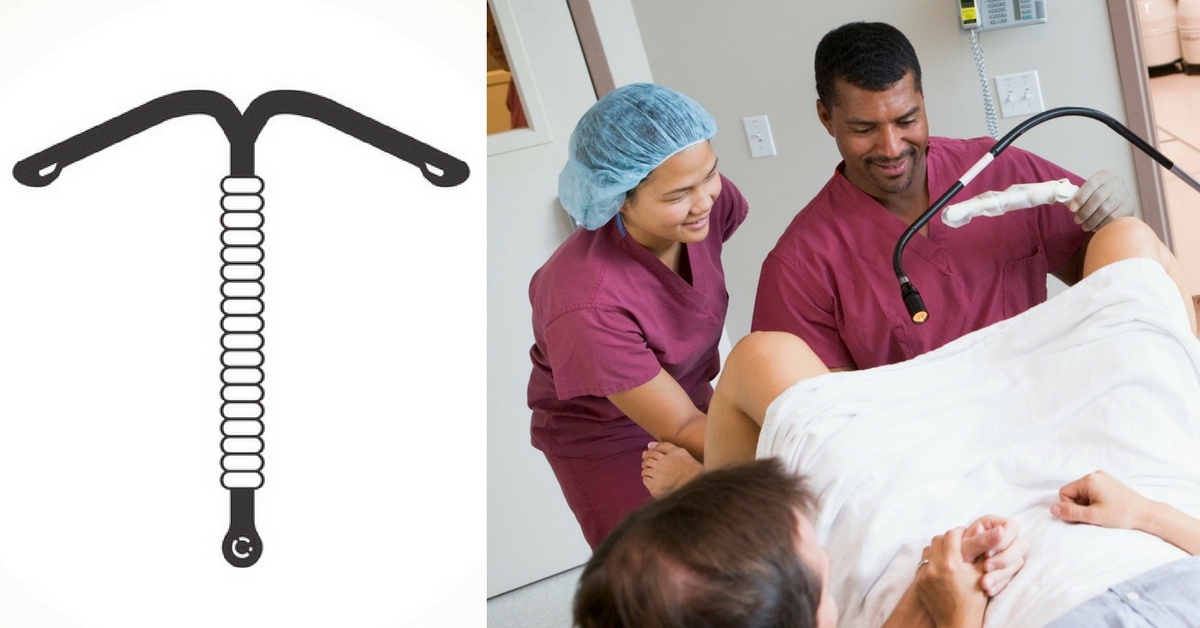An Intrauterine Device, also known as IUD, is a small, usually T-shaped device, which is inserted into a woman’s uterus. The device is usually made from plastic or copper, and both of them have different mechanisms of operation. The device is attached to a plastic string, so that it can be easily removed when it needs to be replaced or removed completely.
IUDs are used as a highly effective, reversible birth control solution. There are two types of IUDs – hormonal IUDs and copper IUDs. Both types of IUDs are highly effective as tools for birth control. The failure rate in case of copper IUDs is as small as 0.8% and for hormonal IUDs it is still lower, at 0.2%.
![]()
How do they work?
There are many proposed theories as to how copper IUDs work in preventing egg fertilization. The most accepted theory is that the copper in copper IUDs acts like a spermicide. Or rather, it is the copper ions that are harmful to the sperm cells. The presence of copper IUD in the uterus increase the concentration of copper ions in the cervical mucus by various mechanisms. These ions in higher concentration in the cervical mucus disrupt sperm mobility, and even affect their viability, so much so that they die as they pass through. Thus, they never reach the egg to fertilize it.
Hormonal IUDs generally release small amounts of levonorgestrel, which is known to make the uterus fatal to the sperm cells. It is the same hormone that is the active ingredient in many of the birth control pills used by women to prevent pregnancy immediately after intercourse. This type of IUD also prevents the sperm from ever reaching the egg, thus ensuring that it is never fertilized.

Which of them is better?
Copper IUDs are known to increase bleeding during the menstrual cycle and also cause more painful cramps. However, because it does not use any hormones, it can be used even during pregnancy. The IUD does not affect an already fertilized egg in any way.
Hormonal IUDs are also known to thin out the endometrial lining of the uterus, where the fertilized egg is supposed to bind. Because the lining is thinner when it sheds during the menstrual cycle, the bleeding and menstrual cramps are milder. However, because of this IUDs effect on the endometrial lining, it is advised against using it for already pregnant women.
In both cases, fertility will return to normal levels at an incredibly fast rate.

How to use it?
Placing the IUD inside a woman’s uterus is a specialist’s job. Women should not attempt to do it themselves. The insertion, replacement, and removal can be easily done with a quick visit to the doctor.
They use a speculum to hold open the vagina, and insert an instrument to hold the uterus and the cervix open. A special tube is used to place the IUD carefully inside the uterus. During insertion, the T-arms of the IUD contract into the IUD’s body, and when placed in the uterus, extend out. The string attached to the IUD is placed an inch or so out of the cervix and the instruments are withdrawn.
When it is time to remove, a specialist will pull the strings at the right angle, such that the T-arms fold back into the IUD’s body, and it eases out of the uterus.
Source: https://www.emedicinehealth.com/birth_control_intrauterine_devices_iuds/article_em.htm





